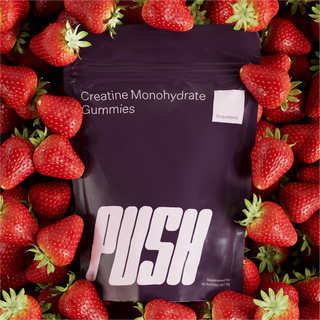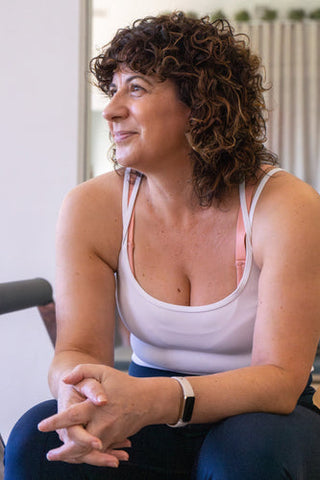Confused about barre and just what exactly it is? Is it a dance class or a workout class? What kind of experience is needed to attend? You can put your mind at ease. We’ve got you and the answers to all your questions! We're setting our sights on the realm of barre fitness in this blog post: we'll walk you through the basics, from its origins and evolution to what you can anticipate in a barre class at any Aleenta Health Club location across Australia.
The Origins of Barre: A Brief Overview
Much like Pilates, barre workouts also have an intriguing and surprisingly similar history. Having been created by German ballet dancer Lotte Berk, this workout class is rooted both in dance training and rehabilitation. Just as Joseph Pilates experienced health issues growing up, inspiring him to pursue fitness and ultimately create Contrology, Berk suffered a career-ending injury in 1959, prompting her to undergo Physical Therapy and rehabilitation. Combining her knowledge of ballet and rehabilitation, the Lotte-Berk technique was born and the rest is history! That’s why today you will see some crossover between exercises in barre and Pilates; both have their roots in rehabilitative exercise. Not to mention both inventors are German… what is in that German water?! 😂

Overtime, the workout evolved as Berk’s own students adapted the fitness style and began opening their own studios, adopting the term "barre" which refers to the stationary handrail used by ballet dancers and barre workouts for balance during exercises. At the core of barre's evolution is its commitment to creating lean muscle definition through low-impact exercises, making it kind on joints and the heart and therefore an ideal form of rehabilitative movement often recommended by Doctors and Physiotherapists. It gained extreme popularity in the 2000’s, but has only really been present in Australia for the past 10-15 years.
Barre Essentials: What to Expect
-
Move to the Music; Find Your Rhythm!
Barre classes combine ballet-inspired moves with small, controlled motions designed to target specific muscles. You'll engage in exercises that challenge your balance, flexibility, and strength, all whilst moving to the beat of your favourite songs. Don’t stress about looking graceful or perfect as moving in rhythm is more about making your workout effective than actually staying in time. Seriously, it’s science! If you get off-beat, feel free to work in your own time and join back in when you’re ready. No one is judging you, nor are they expecting you to be a prima ballerina!

-
Full-Body Engagement
Despite the ballet foundation, barre workouts are not solely about legs and feet. These classes engage your entire body, incorporating exercises that work your arms, core, and back too. However, don’t be surprised if there is more time in class devoted to the legs and glutes… There's a reason barre classes are known for booty gains! 😘🍑
-
Isometric Holds and Micro-Movements
Get ready for isometric holds, where you'll hold positions that engage muscles without the typical up-and-down movements. These sustained contractions help build strength and endurance and make for a surprisingly tough challenge! Additionally, you'll encounter the concept of "pulsing" – a series of small, repetitive bounces that create a burn in the targeted muscles. This technique is central to building muscle endurance, and boy does it burn!.
-
Ballet Barre and Props as Tools
Traditional ballet barres are used to aid in balance and provide support during exercises. Don't be surprised if you spend time at the barre doing pliés, push-ups, and more! Some barre classes also integrate props to intensify the workout, and Aleenta Health Club is no exception. Expect to see small balls, weights and bands in-class to help you make the most of your workout. While these props add resistance, they're chosen to maintain the emphasis on controlled movements, thus making them optional. Barre can be done with just your bodyweight!

-
Personalisation Meets Community
The great benefits of group fitness classes are the ability to exercise alongside others and share in the fire you’re feeling as you workout! It is often easier to get through a challenging class with people by your side for support and encouragement. While this may make personalisation tricky in other fitness styles, Barre is highly accessible since it rarely involves jumping or intense cardio. Additionally, there are a wide variety of modifications to make each exercise tailorable to you personally, so be sure to talk to your instructor prior to class to address any concerns you may have. Then, let the magic unfold as they guide you through class with your own special movement options!
-
Parlez-vous français?
Ballet was invented in the French Royal Court and uses French terminology no matter where in the world you are learning. Some of this terminology is also used in barre workouts. For example:
- Plié - translation: ‘to bend’
- Port de bras - translation: ‘carriage of the arms’
- Tendu - translation: ‘to stretch’

Incorporating elements from ballet, Pilates, and functional fitness, barre classes offer a unique and accessible approach to exercise. As a beginner, you'll find the welcoming environment of barre classes at Aleenta Health Club to be both challenging and invigorating. If you're excited to embark on a barre journey, why wait? Embrace the unique benefits of barre workouts by joining us in-studio. Experience firsthand the elegance and effectiveness of this fitness approach, and witness the transformation of your body and mind.
Can't make it to the studio? We've got you covered with beginner-friendly barre classes available on our YouTube channel.
Start your barre journey today and discover the remarkable results that await by seizing our exclusive introductory offer.
Confused how barre is different from ballet? Check out our recent blog breaking down the two and how they differ.







